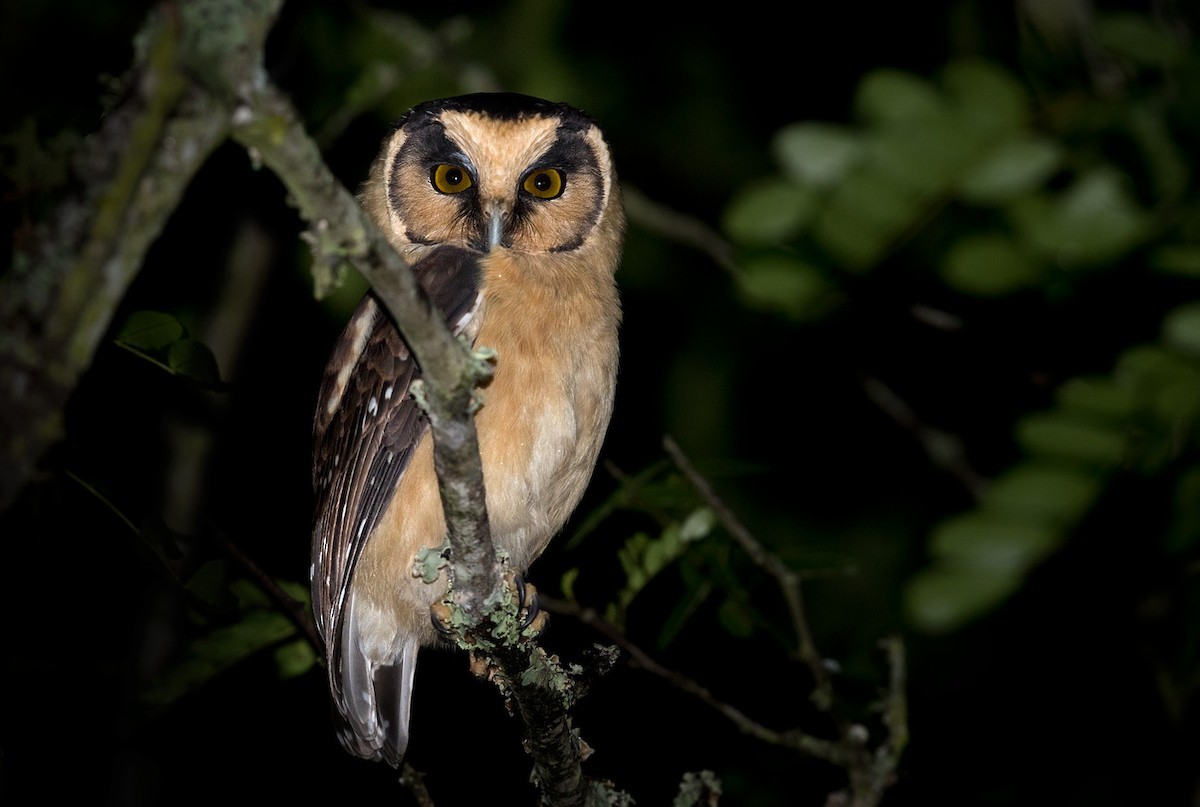Buff-fronted Owl
A species of Saw-whet Owls Scientific name : Aegolius harrisii Genus : Saw-whet Owls
Buff-fronted Owl, A species of Saw-whet Owls
Botanical name: Aegolius harrisii
Genus: Saw-whet Owls
Content
Description General Info
 Photo By Lars Petersson
Photo By Lars Petersson Description
The buff-fronted owl (Aegolius harrisii) is a small owl, a rare and local resident in the highlands of South America from Venezuela south and east to Peru, northern Argentina, and northwest Paraguay. Its range is effectively separated into two parts by the unsuitable habitat of the Amazon basin. This nocturnal bird breeds in open mountain forests, laying its eggs in a tree hole. It takes rodents and other small mammals as its main prey, but also feeds on birds and insects. The buff-fronted owl is a small, compact, short-tailed, and broad-winged owl, approximately 23 cm long and weighing approximately 130 g. It is black above with white flecking on the wings. The underparts are unstreaked buff and the tail is brown with two spotted white bars. The head is large, with yellow eyes and a black-edged buff facial disc. The flight is strong and direct. The voice is a quavering trill sometimes varying in pitch. The buff-fronted owl was described by the American ornithologist John Cassin in 1849, and given the binomial name Nyctale harrisii. The binomial commemorates the American ornithologist Edward Harris. 
Size
21 cm
Nest Placement
Cavity
Feeding Habits
The Buff-fronted Owl (Aegolius harrisii) consumes insects, small mammals like rodents and mouse opossums, and occasionally birds. It forages by hovering over shrubs before dawn and by examining nest cavities for prey. Adaptations include silent flight and nocturnal hunting.
Habitat
Buff-fronted Owl thrives in diverse humid forested habitats, ranging from open woodlands of Podocarpus and Alnus to the dry Chaco. Adapted to elevation, buff-fronted Owl inhabits mossy, stunted forests, and semi-open subtropical rainforests with clearings. They also reside in human-modified landscapes with fruit trees and palms, showing ecological versatility within these settings.
Dite type
Carnivorous
General Info
Feeding Habits
Bird food type

 Photo By Lars Petersson
Photo By Lars Petersson Scientific Classification
Phylum
Chordates Class
Birds Order
Owls Family
True owls Genus
Saw-whet Owls Species
Buff-fronted Owl